This Viking Aegir Review shares what you need to know before booking a trip along the Danube with Viking Cruises.
The Viking Aegir Review: What Is It Like on the Danube Waltz Trip?
The Danube Waltz route is a greatest-hits tour of Central Europe, taking you from the splendour of Budapest to the baroque beauty of Passau, with stops in Vienna, Linz, and more. It’s a route that showcases the best of the Danube, from bustling capitals to riverside towns, in places where time seems to have wandered off some somewhere for a snooze and a sleepy slice of strudel.
You get a completely different perspective to travel by rail, road or air, with the river unfurling like a ribbon of history through four countries in one week.
As a professional travel writer, I tested this seven-night river cruise for research purposes, I tell you, research. The stories about the places will come later, but let’s start with this Viking Aegir review.
After all, you need to know a few things about where you’ll rest your head.
Prefer video? Watch the video of the Viking Aegir Review here.
Disclosure: I also travelled as a guest of Viking, so I could write this Viking Aegir review, with the promise that, as always, as ever, I was free to write what I like. Also, if you book or buy through any of the links on this page, we may earn a small commission at no extra cost to you. Cheers.
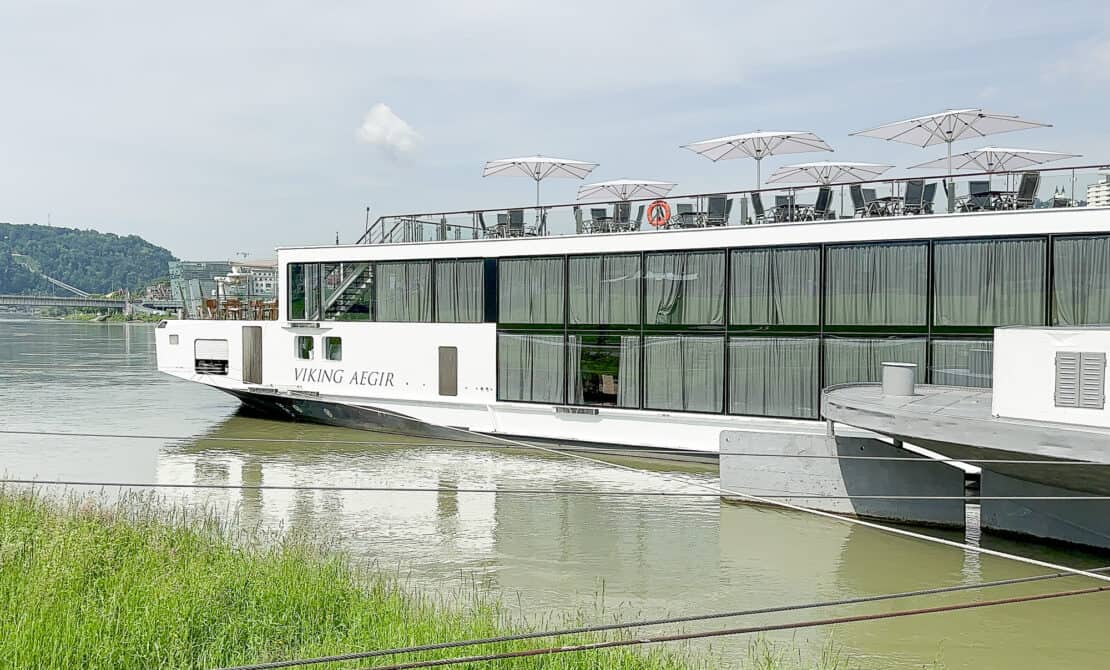
The Viking Aegir Review: A Ship Fit for the Gods
Let’s start with something poetic. The Viking Aegir, part of the award-winning Viking fleet, is named after Ægir, the Norse god of the sea. I don’t know about you but I’m not, generally, entirely up to speed with my Norse mythology. But once your realise that Viking cruises does not equal Viking longships, it’s altogether easier to imagine the luxurious experience of gliding past castles, cathedrals and cobblestones with the mighty river as your road. And it’s easy to see why the Norse sea god moved from the ocean to the rivers: no chance of seasickness.
With a sun deck perfect for panoramic views, the sun-soaked Aquavit Terrace for al fresco dining, and spacious staterooms with spectacular views, this ship is almost as much a part of the experience as the cities themselves. The hybrid diesel-electric engines makes a move in the right direction when it comes to sustainability, as well as providing a quieter, smoother voyage.
The Aquavit Terrace
One of my favourite spaces on the ship is the Aquavit Terrace, a place designed for relaxation and unobstructed views. Here, you can enjoy meals or simply sit back and watch the world pass by.
The terrace’s open design means you’re never far from the sights that make this route so special, but it’s also a practical space, perfect for a quick bite or a quiet moment of reflection.
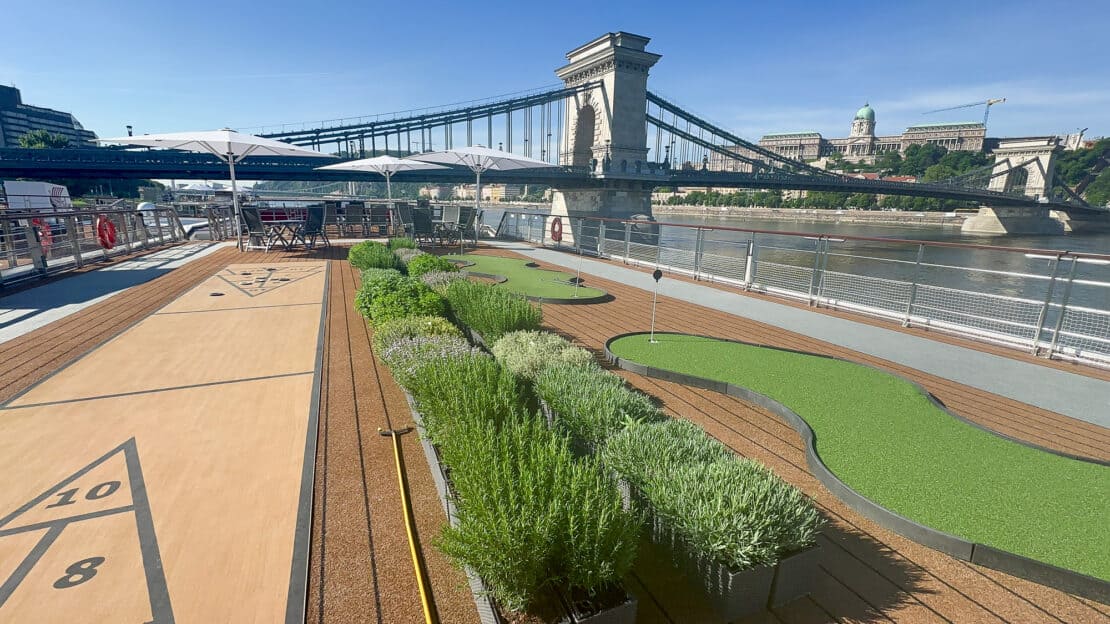
The Sun Deck
If you prefer a bit of exercise with your scenery, try the Sun Deck. With its walking track and ample seating, this upper deck is a great spot to stretch your legs or simply take in the view.
The addition of an organic herb garden and shaded areas shows an attention to detail that’s more about enhancing your experience than impressing you with luxury for luxury’s sake. Solar panels and a putting green complete the outdoor space.
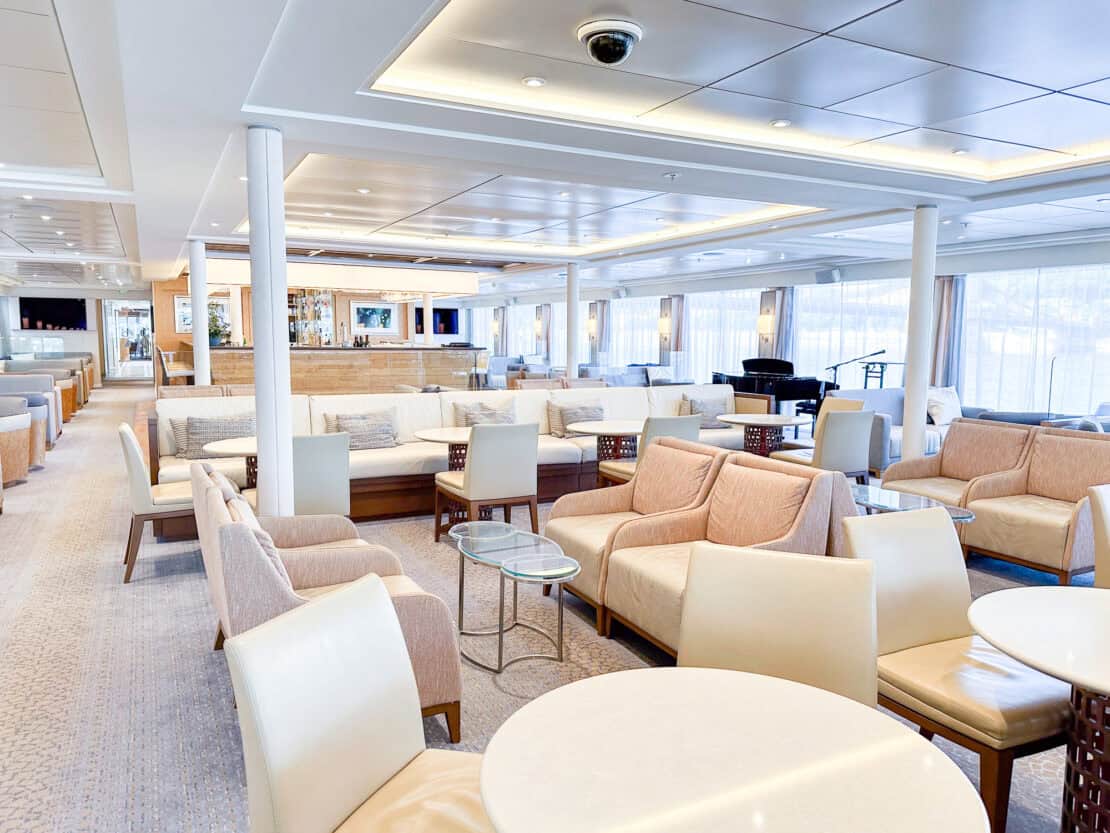
The Lounge
The Lounge, with its expansive windows and cosy seating, is an inviting spot for socialising or simply unwinding with a book. The décor is restrained, with neutral tones and natural materials that create a calm, welcoming environment – perfect for a pre-dinner drink or a quiet conversation.
Or, well, a raucous dance off during a quiz, the kind of thing you never thought you’d see yourself doing but actually quite enjoyed… Yes, it’s the heart of the ship’s entertainment, as well. The lounge, that is. Not my dancing…
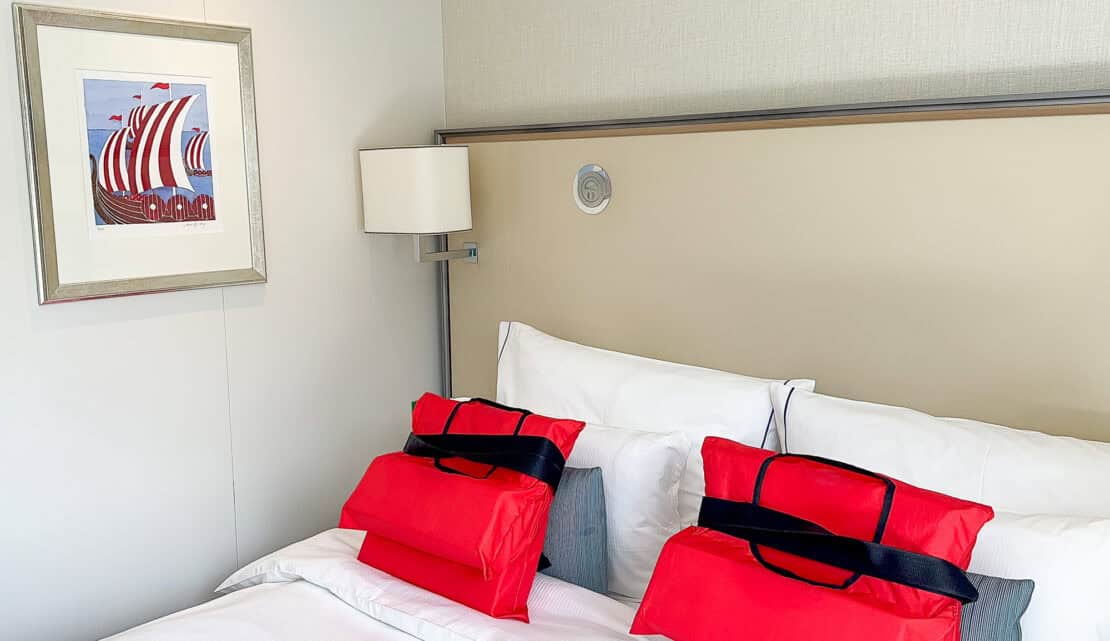
Staterooms
Staterooms aboard the Aegir are designed with comfort in mind, without overdoing it. The ship features 95 comfortable outside staterooms, offering a range of accommodation options to suit different preferences. These include 25 Standard Staterooms, 22 French Balcony Staterooms, 39 Veranda Staterooms, seven Veranda Suites, and two luxurious Explorer Suites.
There’s an optional twin-bed configuration, so it’s perfect for couples, friends travelling together or solo travellers (like me) who prefer to starfish across the double making the most of all the space possible. The individual climate control is also a blessing.
I stayed in a French Balcony Stateroom, where the room becomes your balcony instead of having a separate space outside. Watch this video to see what I mean.
For those seeking more space and a few extra perks, the Explorer Suites offer a step up in terms of both room size and amenities, including a wraparound balcony and a separate living area. These suites cater to travellers who value privacy and a bit more room to spread out, though the ship’s overall design means that even the more modest accommodations are well-appointed and comfortable.
Guest Services & Shop
You can buy souvenirs, arrange excursions and ask all the questions you need at the Guest Services desk.
Note!
In river cruising, ships often have to dock next to each other and you walk through another ship to reach the shore.
This does mean, however, that sometimes when you open your curtains, you find someone else doing the same…
A point to bear in mind when deciding whether or not to opt for a balcony.
And when deciding about wearing pyjamas…
In Detail
- My room, 234, came with a French balcony with a floor to ceiling window which slides open.
- It contained a stool and narrow desk and a small bathroom with hooks and shelves aplenty.
- The wardrobe comes with plenty of wooden hangers, a safe and deep shelves.
- You’ll also find a fairly shallow set of drawers, charging points, reading lights and bedside lights on either side of the bed.
- A full length mirror and another mirror adds width to the room and Viking artwork on the walls brings a homely touch.
- Each room also comes with two “Quietvoxes” for excursions, a telephone, TV with remote control and Viking magazines.
- Staterooms all have a fridge, so you can bring your own bottle to the room – and to the restaurant – and there’s no problem with storing medication which needs refrigeration.
- Toiletries includes the often forgotten conditioner as well as shampoo and shower wash as well as body lotion.
- Snacks, such as fruit, cookies and regional delicacies are delivered twice a day along with the turn down service.
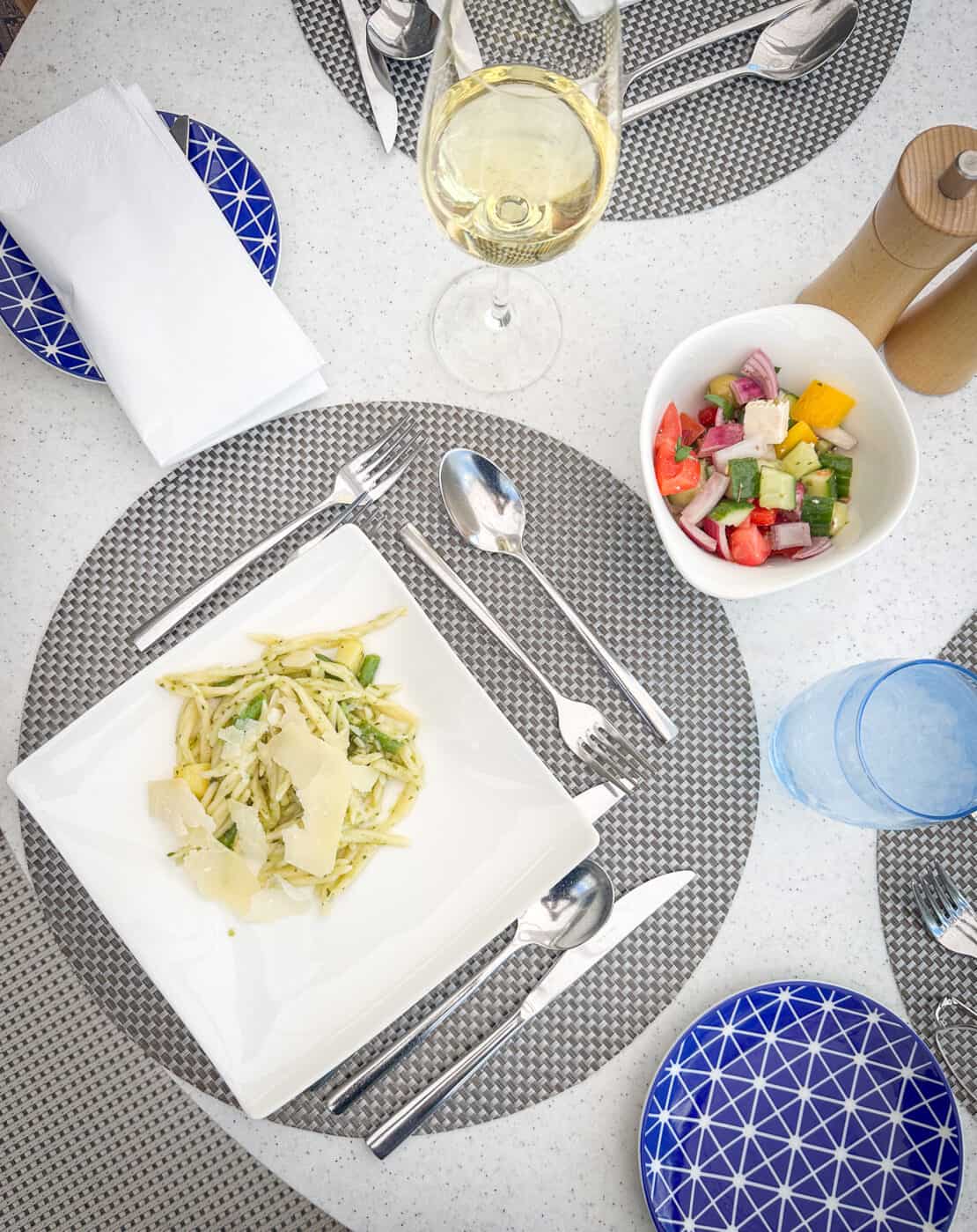
Food and Drink on the Viking Aegir
Dining aboard the Aegir strikes a balance between local and international: the ship’s chefs focus on using locally sourced ingredients, offering meals that reflect the regions you’re sailing through. However, if you’re less adventurous with your dining habits, then you’ll also find international classics like Caesar salad, hamburgers and salmon.
The main dining room, which can seat 200, lives downstairs and a few people can dine in the Aquavit terrace upstairs. When the weather is good, the latter can be opened up to double the seating and it is truly glorious to dine in the sunshine, watching the Danube slip by.
Both lunch and dinner are three course meals with table service and there is a self service breakfast buffet along with an egg menu and selection of fresh fruit juices.
House wine comes included with lunch and dinner and soft drinks are included for everyone. For other alcoholic drinks, you can pay as you go or take a look at one of the drinks packages.
One thing to mention for solo travellers: seating. There is no reserved seating and very few tables for two; the idea is that you mingle with other guests (or dine alone in your room, I suppose.) At first, this can feel intimidating but in the end, it was hands down one of the best parts of the trip. I met so many different people with so many different backgrounds. It made the whole trip a blast. More stories to share about that, too, when the time is right.
Not sure if sailing alone is for you? Check out this guide to solo cruising and find out.
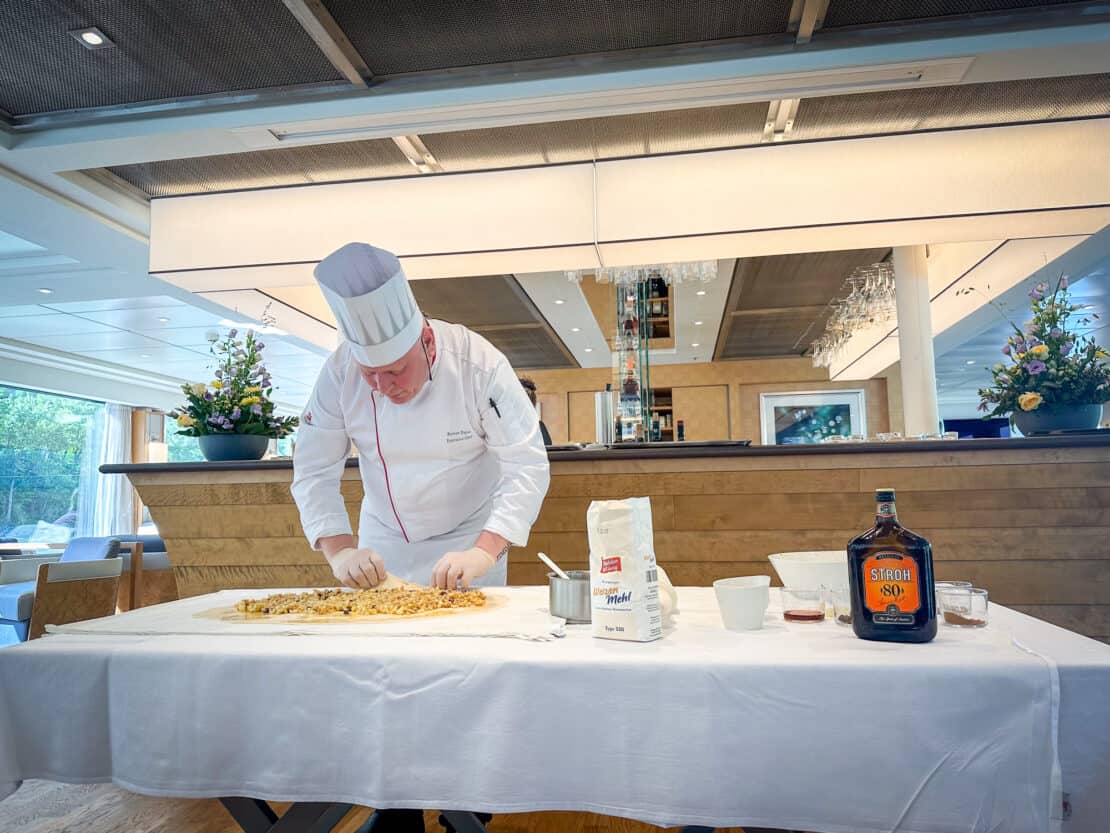
Special Events
There’s also an on board cooking lesson, in this case an apple strudel recipe while floating away from Vienna.
- Recommended reading: the traditional dishes in Austria you need to know
Plus, a regionally themed evening. In this case, Bavarian bagels, cold cuts and other specialties artfully arranged on the tables, while the staff wore traditional Bavarian costumes.
And, of course, you can eat in local restaurants pretty easily. Just remember to check the departure time before you get carried away (or not, in this case…)
Coffee Station
A handy 24 hour Coffee Station serves hot drinks and waistband-busting sweet treats at all hours, just in case you can’t make it through the night without a stash of French croissants.
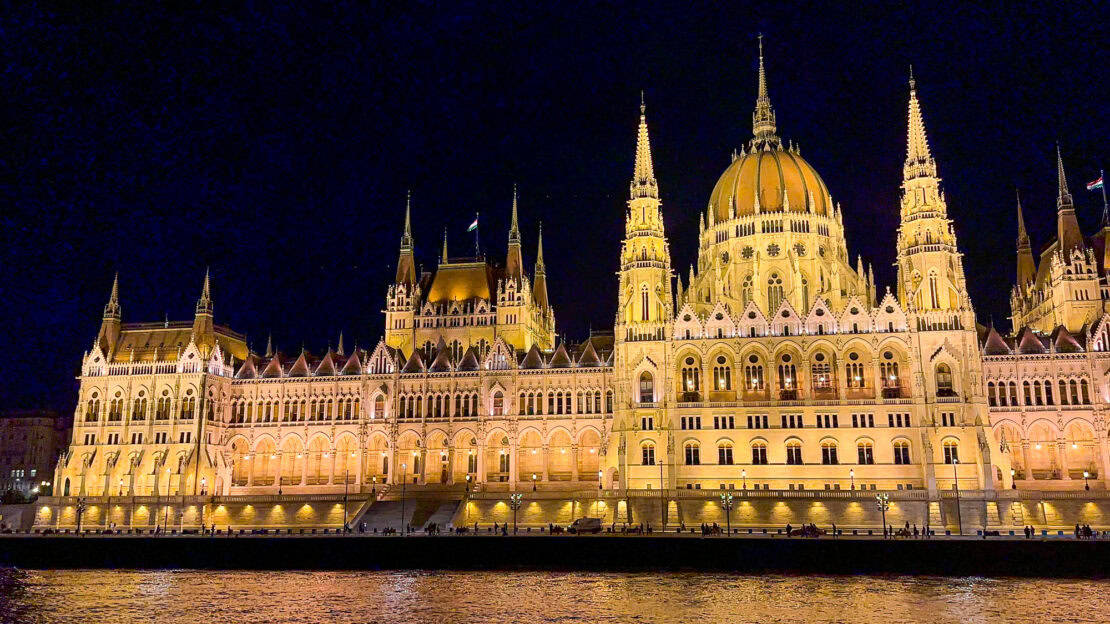
The Excursions
One of the most frequently asked questions about the trip involves the excursions.
Included Excursions
Each day has one included excursion which is open to all passengers. Don’t fear unmanageable crowds, though. Groups are split into smaller groups by random allocation on tickets issued the night before (although, you can also request to be partnered with people you know and like.)
Crucially, you don’t have to go on these excursions, either. They are just there as a bonus.
Typically, they involve walking tours with local guides, although Viking do hire coaches when you need them (the port in Vienna is a few stops along the subway from the central sights, unlike the other river ports on this itinerary.) Passengers wear Quietvoxes to minimise disruption and to make sure you can take photos and look at things without losing the local guide.
Note – you’ll often see the word panoramic, which I took to mean viewpoints of the city. It actually means more of an orientation of the key sights of a port.
- Recommended reading: the Viking Nile cruise review
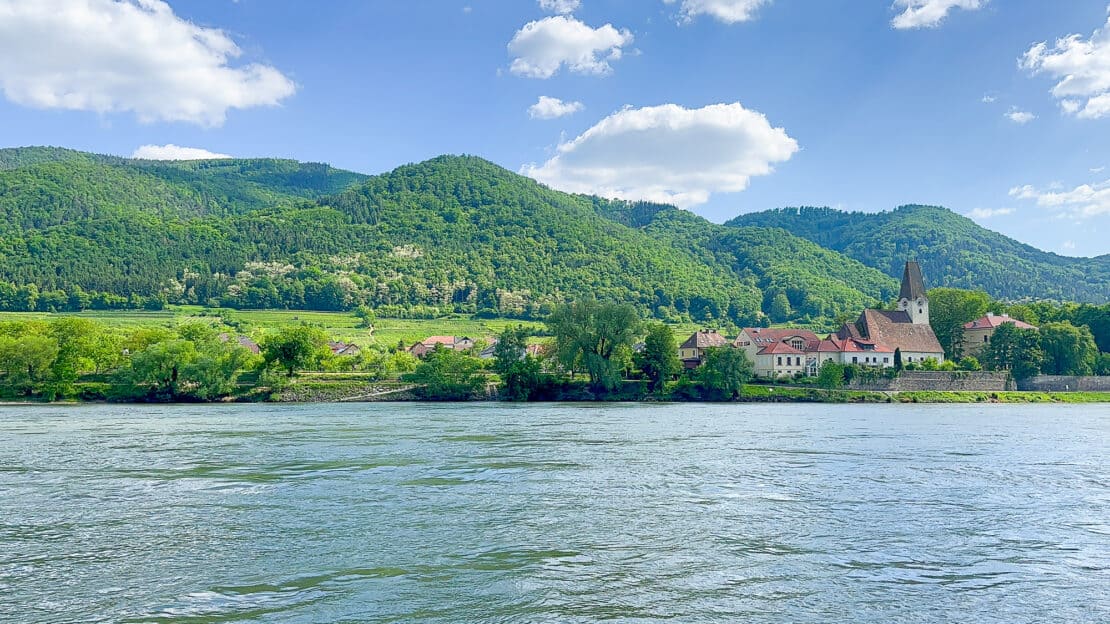
Optional Excursions
Viking also offer a wide range of optional excursions, which attract an additional fee. You can book them in advance via the Viking website or on the ship, although there are periods when you can’t, so if you have your heart set on something, then book as far ahead as you can.
Unlike some ocean cruises, with river cruising, you don’t usually need help to get to the centre of town. So it’s also really easy to build in your own DIY excursions, if that’s more your style. This can work well for city based trips like visiting the thermal baths in Budapest or the Great Synagogue. But for excursions further afield, such as visiting the Gottweig Abbey from Krems, it’s near impossible. Finally, Viking run some exclusive excursions, such as making marillenknödel, that you won’t be able to organise yourself.
Check out the Viking highlight on my instagram stories for more.
Leisurely Excursions
For cities with steep, cobbled streets, Viking also offer a leisurely city tour. This avoids the steepest parts, involves more coaches or other forms of transport (like a tourist train) and is a great way for including people with health issues or mobility problems. You can sign up for this once you’re onboard and is great for intergenerational travel.
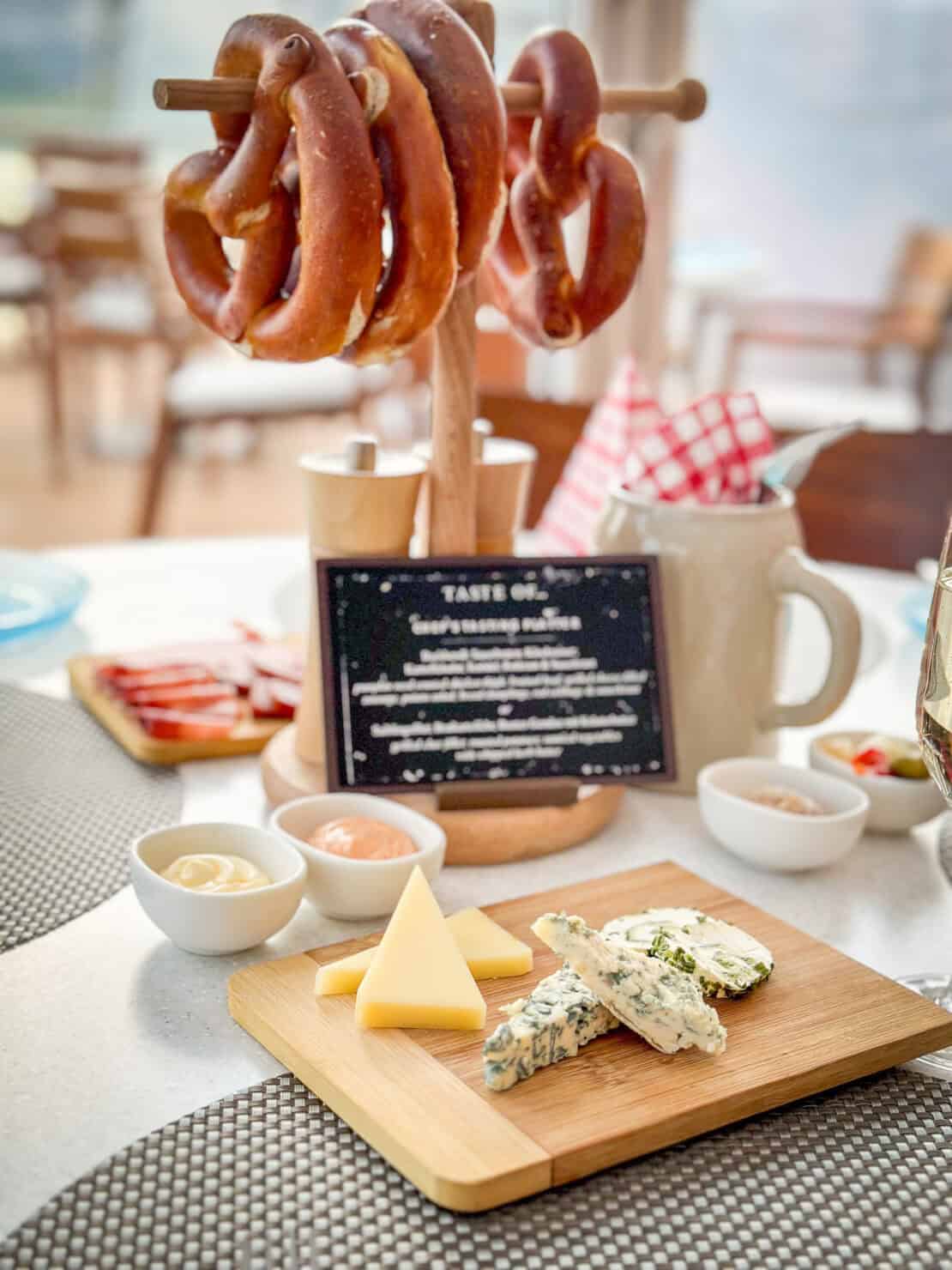
On Board Entertainment
Piano performances, dance floor boogies, quiz night, and cooking demonstrations, if you want to be entertained, you can be. Equally, if you seek solitude, you can find it on the sun deck or in your room.
Each night, there’s a run through of the following day, which you can follow from your stateroom if you prefer (look for the live section and hit “lounge.”)
The flat-screen TV in each stateroom comes loaded with locally relevant programmes in English, with a fun mix of infotainment and, well, just entertainment.
Fast Facts
- Guests: 190
- Crew: 53
- Length: 443 feet
- Year Built: 2012
Deck Plans
You can see the full deck plans of this modern river cruise ship here.
The Danube Waltz Route
The Danube Waltz from Viking River Cruises runs from Budapest to Passau – or in the other direction. Which should you take? It doesn’t really matter. The only slight observation I would make is that Budapest packs a bigger punch than Passau. So, if you want to build up to a crescendo, begin in Passau. Alternatively, if you want to start your trip with a bang, then begin in Budapest and finish in the calmer, sweeter streets of Passau.
I could write so much about what I experienced on this trip and my hard drive is full of photos, videos and notes. But to begin with, let’s give an overview.

Budapest
Budapest is a world class city, a place with stunning architecture, heartbreaking history and a young and lively urban atmosphere. The Hungarian Parliament building dominates the skyline, its neo-Gothic spires mirrored in the river below. On the other side of the water, Buda Castle perches atop a hill, a silent sentinel watching over the city.
Find more inspiration in my two-day Budapest itinerary.
History is palpable everywhere you go, from the Roman ruins of Aquincum to the grand thermal baths that have been soothing aches and pains for centuries. A visit to one of these baths is practically a rite of passage. Whether you opt for the opulent Gellért Baths or the inspired-by-the-gods Széchenyi Baths, you’ll find yourself immersed in a tradition that dates back to the city’s Ottoman occupation. The thermal springs are said to have healing properties, but even if you’re sceptical, what’s not to like about soaking in a warm, mineral-rich pool while surrounded by stunning architecture?
Bratislava
Bratislava, the compact capital of Slovakia, offers a quirky, overlooked charm, beginning with its UFO Observation Deck and continuing with its statue of Cumil, the sewer worker. It’s a place that many miss but that’s a shame. Its cobbled streets and cosy cafes make Bratislava worth visiting.
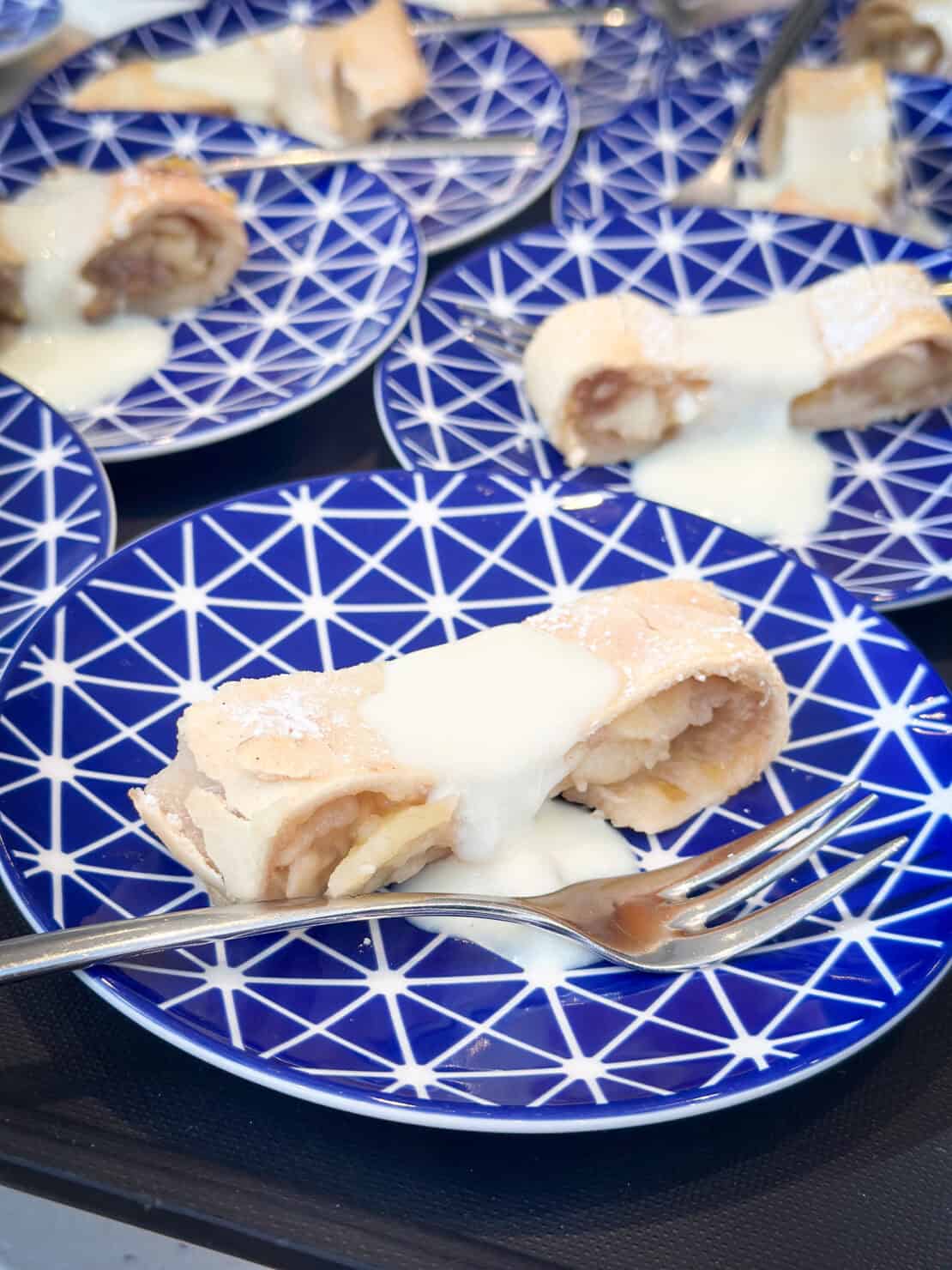
Vienna
Vienna, Austria’s majestic capital, is a city where imperial grandeur and cultural brilliance come to life. The Schönbrunn Palace, a stunning baroque masterpiece, showcases the lavish lifestyle of the Habsburgs, while the historic cafés invite you to indulge in a slice of Sachertorte alongside a Viennese coffee.
The city is a paradise for classical music enthusiasts, with the Vienna State Opera and Musikverein offering world-class performances. A walk along the Ringstrasse reveals architectural gems, from the Gothic St. Stephen’s Cathedral to the grandiose Hofburg Palace, making Vienna a timeless place to visit in Europe, no matter your tastes.
Looking for some more unusual itinerary suggestions? Don’t miss this guide to dark tourism in Vienna.
Linz
Linz, Austria’s third-largest city, blends a rich industrial past with a focus on the future. The striking Lentos Art Museum and the Ars Electronica Centre, a hub for technology and art, reveal Linz’s avant-garde spirit.
Meanwhile, the Pöstlingberg Hill offers sweeping views of the Danube and a charming pilgrimage basilica. Linz is also known for its namesake Linzer Torte, the oldest cake in the world, a must-try for visitors.
Krems & Wachau
Krems, located in the heart of the Wachau Valley, is known for its terraced vineyards, producing some of Austria’s finest white wines, particularly Grüner Veltliner and Riesling. Krems itself is a beautiful medieval town, with its 16th-century buildings and winding streets.
The Wachau Valley, a UNESCO World Heritage Site, offers gorgeous landscapes, perfect for cycling, while the nearby Gottweig Abbey teaches you how to make a Marillenknödel or apricot dumpling.
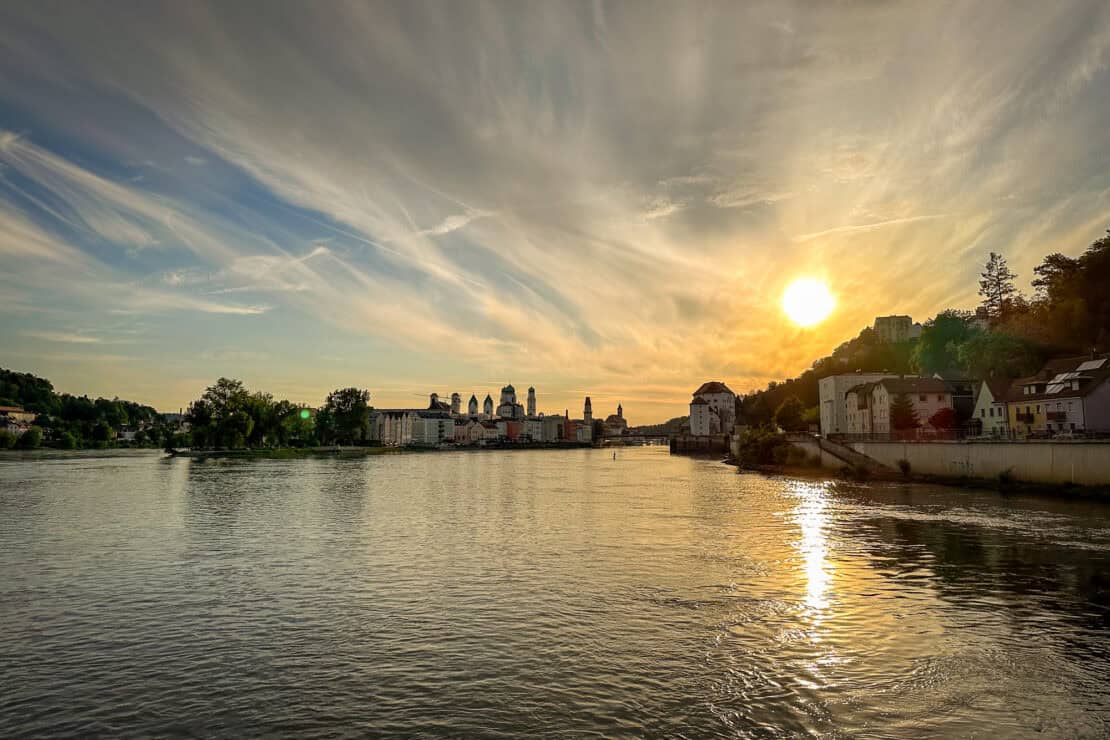
Passau
Passau, often referred to as the “City of Three Rivers,” is uniquely positioned at the confluence of the Danube, Inn, and Ilz rivers. Its old town, with pastel-hued buildings and narrow lanes, has a distinctively Italian flair.
St. Stephen’s Cathedral houses the largest cathedral organ in the world and it’s a lovely, gentle place to reflect back on on your journey along one of the greatest rivers of Europe.
Practical Tips for Your Danube River Cruise
As you prepare for your Danube River cruise, a little practical advice can go a long way in ensuring you make the most of your journey. From packing essentials to understanding the nuances of river cruising, here are some tips to help you navigate the details and ensure a smooth and enjoyable experience from start to finish.
Packing Smart
While river cruises offer a more relaxed dress code compared to ocean cruises, packing smart can enhance your comfort and enjoyment. For daytime excursions, comfortable walking shoes are a must, as many of the ports feature cobbled streets and hilly terrain. Layered clothing is also a good idea; weather can vary significantly between cities and during different seasons. Don’t forget a light rain jacket or an umbrella, as unexpected showers can pop up.
Evenings on board are generally smart casual, although slightly dressier attire is appreciated. You can find my best cruise packing hacks here.
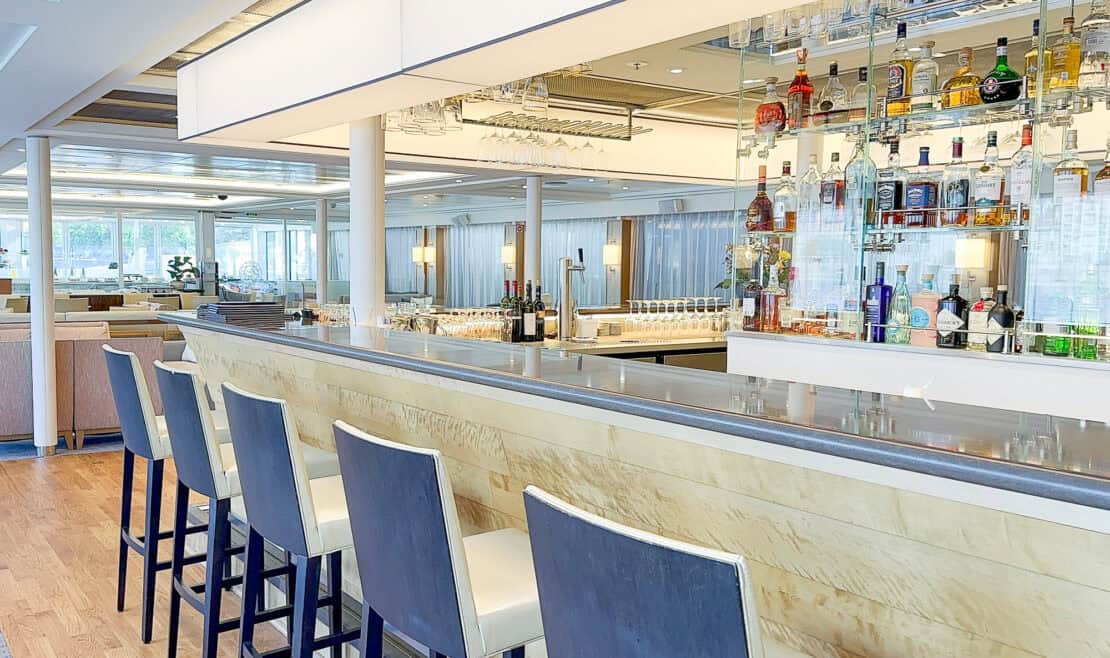
Currency and Payment
While many places along the Danube accept credit cards, it’s still a good idea to carry some local currency for smaller purchases or in case you visit places where cards aren’t accepted. The euro is widely used in countries like Austria and Slovakia, but Hungary uses the Forint.
Exchange rates can fluctuate, so check the latest rates and consider exchanging a small amount of money before your trip. ATMs are available in most cities if you need more cash.
Understanding River Cruise Excursions
River cruises offer a variety of excursions, often included in your fare. It’s wise to review the itinerary and excursion options in advance. Some tours may require booking ahead of time due to limited space, especially for popular activities or more specialised experiences.
If you prefer exploring on your own, ensure you’re familiar with the local public transport options or have a good map.
Staying Connected
Wi-Fi is typically available on board, but connectivity can be inconsistent or slow, particularly in more remote areas. For critical communications or high-speed needs, consider a local SIM card or an international roaming plan. Many ports also offer free Wi-Fi in public areas, so you can stay connected while exploring.
Health and Safety
Travel insurance is highly recommended for any trip, and river cruises are no exception. Ensure your policy covers health, travel disruptions, and loss of personal belongings. Also, check if any vaccinations or health precautions are needed for the countries you’ll visit.
While most river cruises are quite safe, it’s always wise to take standard precautions such as staying aware of your surroundings and securing your valuables.

Local Customs and Etiquette
Understanding local customs can enhance your travel experience. For instance, in Austria and Germany, it’s customary to greet people with a firm handshake, and it’s polite to address people using their titles and last names until invited to use their first names.
In Hungary, tipping is customary, with a 10-15% tip being standard in restaurants. Familiarising yourself with local etiquette will help you feel more comfortable and respectful during your visit.
Onboard Tips
River cruise ships, like the Viking Aegir, are generally smaller and more intimate than ocean liners, making it easier to get to know the crew and other passengers. Attend the welcome briefing to get an overview of the ship’s facilities, safety procedures, and daily activities.
And don’t be shy when it comes to seating arrangements for dinner. Take a deep breath and get chatting. Everyone’s in the same boat (sorry!)
Dining and Dietary Needs
If you have dietary restrictions or preferences, inform the cruise line well in advance. Most cruise lines are happy to accommodate special diets, but it’s best to make arrangements early to ensure your needs are met.
Travelling Light
You need to swipe in and out of the ship, so it’s handy to have somewhere to keep your room key. That’s all you need while on the ship, so if (*ladies) you have dresses without pockets, it’s handy to have a lightweight handbag.
Staying Hydrated
Viking offer bottled water as you head out onto each shore excursion but in an effort to encourage sustainable tourism, pack your own water bottle and use the refilled bottles in the rooms or at the coffee station.
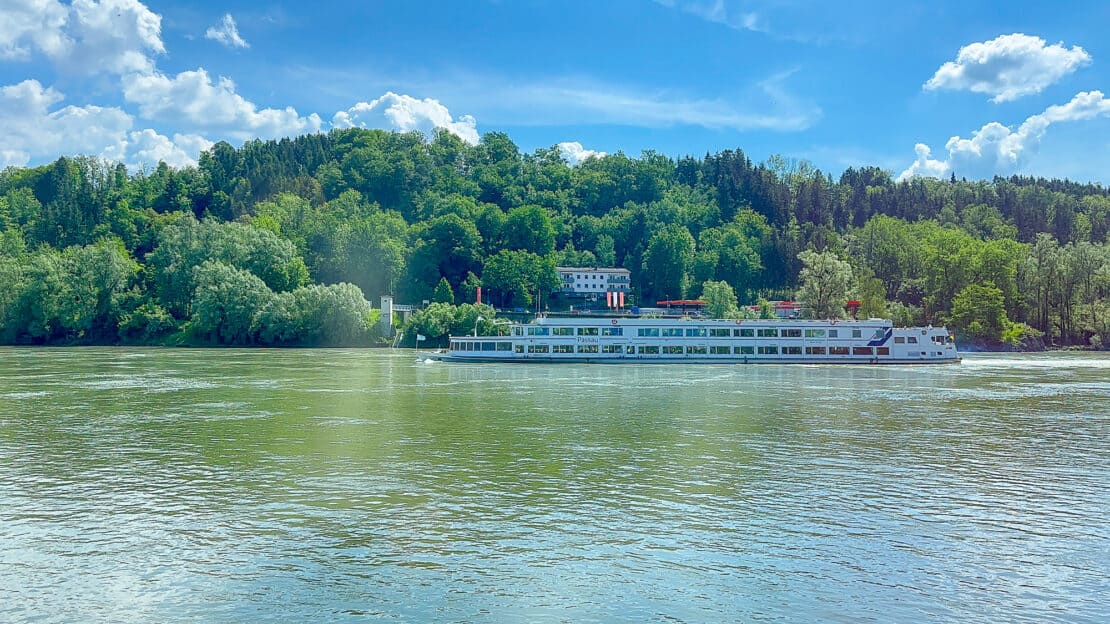
How to Book
If you’re a regular reader, you’ll know that it’s rare that I recommend the use of travel consultants. It’s usually so easy to do it yourself. But when it comes to cruise fares, it’s helpful to speak to an expert. They can walk you through different vessel types and help you understand more easily the difference between a French balcony and a step-out balcony, a private wraparound veranda and full-size verandas, explorer suites and veranda suites, as well as negotiating air fares and additional restrictions. It can feel as though there’s an overwhelming world of choices when it comes to booking a Europe river cruise, and a good travel agent can help you get it right. With the help of a good travel blog, of course ;-)
To find the best offers, plan well in advance, and remember that the cheapest deal isn’t always the best value.
With that said, you can book direct right here.
Related Articles
- Traditional dishes in Austria: the 15 dishes you need to try
- Dark tourism in Vienna: what you need to know
- Quirky and unusual things to do in Germany
- How to spend two days in Budapest
- Is Bratislava worth visiting?
- The best cruise packing tips
- The best solo cruise tips to make sure you have a great time
- Capital gains: exploring Europe’s longest river




